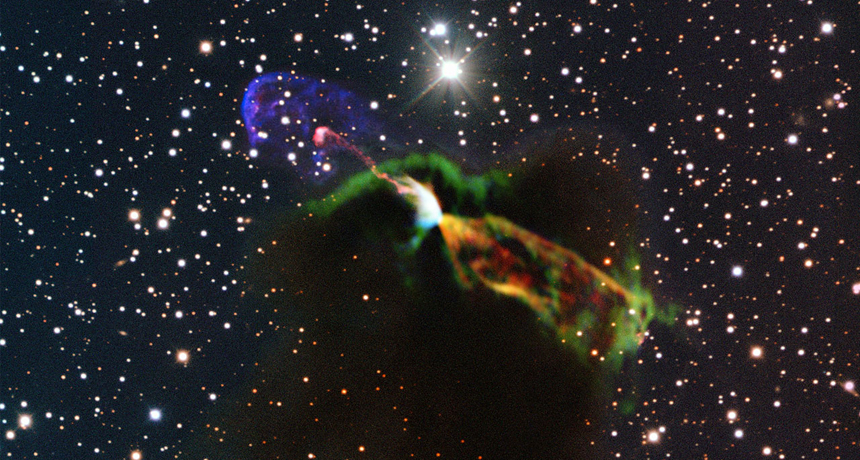Pictures of young star show unusual outbursts
Ejections from stellar newborn move faster, differently than astronomers thought

STELLAR NEWBORN A young star bursts to life, ejecting material that slams into surrounding gas, causing the region of space to glow. New images (one shown) of this young star suggest that its ejections move much faster and have more energy than previously thought.
ESO/ALMA ESO/NAOJ/NRAO)/H. Arce; Acknowledgements: Bo Reipurth




